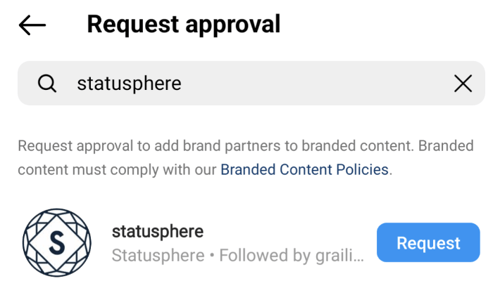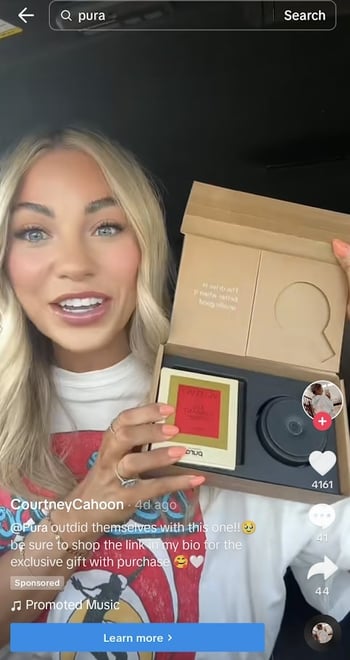
“Allowlisting? Is that like whitelisting influencer content? What the heck are dark posts?”
Marketers are no strangers to new concepts and trending terms.
If you’ve been running ads with influencer content, you know this all too well.
Chances are you’ve heard of allowlisting and dark posting but aren’t 100% sure what they are. Ironically, you might already be using these tactics and not even realize it.
Hey. that’s totally okay! If you’re optimizing your paid campaigns with content from creators, you’re on the right track regardless.
The problem? So many marketers use these branded content terms interchangeably and it’s super confusing. That’s why we wrote the post where we clear the air by…
- Explaining what allowlisting, whitelisting and dark posting actually mean
- Highlighting benefits, challenges and situations where these tactics make sense
- Simplified steps and best practices for all of the above
Defining Influencer Allowlisting vs. Whitelisting vs. Dark Posting
These terms refer to ways to turn influencer-generated content into social media ads.
Again, marketers love to latch onto new buzzwords. Guilty as charged!
There’s been a lot of buzz about influencer allowlisting versus whitelisting recently. Meanwhile, many brands are seeking out UGC creators to help with marking dark posts to run as ads.
Some of these terms are more “en vogue" than others. Here’s a rundown of the similarities and differences between allowlisting, whitelisting influencer content and dark posting.
|
Native Allowlisting (Whitelisting)
|
Manual Allowlisting (Whitelisting)
|
Influencer Dark Posting
|
- Influencers authorize brands to run ads using the creator’s post(s).
- Advertising permissions and assets are shared via native branded content tools (such as Partnership Ads on Instagram or TikTok Spark Ads).
- Ads can run from the creators’ account or the brand’s account.
- The “allow” in “allowlisting” comes from the quick access provided by influencers for brands to use their content in ads.
|
- Brands coordinate with influencers to run ads using a creator’s post.
- Assets and advertising permissions are obtained by the brand via Ads Manager on TikTok and/or Instagram.
- Ads can run from the creators’ account or the brand’s account.
- The concept of “whitelisting” influencer content comes from the fact that brands can essentially white-label influencer posts as ads.
|
- Brands pay influencers for an unpublished promotional post resembling organic content.
- Assets are owned by the brand. The brand takes that post and publishes it as a social media ad.
- Ads run solely from the influencer’s account but don’t show up in their feed.
- The “dark” in “dark posting” comes from the fact that posts provided to brands are never actually published organically.
|
To simplify all of the above even further:
- Influencer allowlisting and whitelisting are the same thing! However, how you allowlist influencer content can vary (manually versus using native branded content tools).
- Each of these tactics offers varying levels of control and customization when it comes to creating influencer ads. For example, a dark post is essentially an unpublished piece of influencer content that you commission yourself. Allowlisting content is simpler when it comes to ad creatives and targeting. Not to mention that allowlisted content is organic (versus dark posts which technically aren’t).
- Determining which of these tactics is “best” depends on your bandwidth and goals. Allowlisting and dark posting both require different levels of legwork. That said, the former is definitely more scalable than the latter.
With the basics out of the way, let’s dig deeper into each of these methods of turning influencer content into ads and which makes the most sense for your brand’s situation.
Native Influencer Allowlisting (Whitelisting)
Native influencer allowlisting refers to branded content tools like Partnership Ad codes. Using Meta’s native tools, influencers can grant brands permission to run ads with their assets. This represents a speedier, streamlined version of what used to be known as “influencer whitelisting.”
Below is an example of Instagram’s native branded content toggle:

Native Influencer Allowlisting is Ideal For Brands That…
- Need to quickly turn “on” influencer ads without manual outreach
- Work with an existing network of influencers you they have a good rapport with
- Want to leverage influencer audience targeting to reach new potential customers
- Have influencer content that’s ad-ready as-is and requires little-to-no tweaking
The ability to quickly toggle ad permissions without outreach is an upside for brands and creators. Keeping all of your content rights management communications confined to the platform you’re running ads on is also a nice bonus. Less back-and-forth and nothing gets lost.
Manual Influencer Allowlisting (Whitelisting)
Manual influencer allowlisting refers to the process of getting access to a creator’s post to promote via Instagram or TikTok ads. The manual steps of white-labeling influencer content require more coordination and involvement than native allowlisting. This is why many creators charge a premium for advertiser access.
Manually whitelisting influencer content on TikTok and IG involves a combination of:
- Coordinating permissions via Ads Manager
- Sharing creator codes and links (such as TikTok Spark Ad codes)
- Optimizing ad copy and targeting options prior to the ads going live
Below is an example of a whitelisted ad on TikTok.

Among the biggest benefits of influencer whitelisting is the ability to improve the performance of your paid social ads using proven creatives.
Manually Whitelisting Influencer Content is Ideal for Brands That…
- Have the bandwidth to communicate and coordinate with influencers one by one
- Have seen success with social ads and understand the best practices of ad targeting
- Embrace always-on influencer marketing and have ample posts on hand to turn into ads
Posts that earn high engagement rates organically are perfect candidates for paid ads. Allowlisting your best organic or paid influencer content represents a way to optimize your paid social media campaigns and influencer marketing strategy at the same time.
Influencer Dark Posting
In the context of influencer marketing, dark posting refers to the act of brands running creator ads with influencer content that is never published by the influencer. Dark posting on Instagram is particularly popular for ads via Stories.
Despite its name, dark posting isn’t sketchy and doesn’t violate TOS on TikTok or IG.
The concept here is simple enough. Dark posts essentially look like influencer ads but aren’t tied to the account of the creator who made the post.
Their audiences don’t see it and it’s not present in their feed. That’s why it’s “dark.”
Influencer dark posting comes with a few downsides. For starters, the reach of a dark post is limited to your brand’s account and ad-targeting audience. Consider also that the biggest benefit of working with micro-influencers is their enthusiastic and engaged audiences. Not to mention the potential to organically go viral.
But given that ads with influencers outperform non-creator ads, dark posting can be effective. After all, dark post ads should be authentic and “real” regardless.
Influencer Dark Posting is Ideal for Brands That…
- Want greater control of messaging but need authentic content to promote in ads
- Have the time and bandwidth to negotiate with and brief creators
- Have an established process for both vetting creators and running social ads
Dark posts also require the creation of totally new assets versus repurposing content that you already have. This requires an additional investment of your time, not to mention briefing influencers and negotiating with them. As a result, dark posts aren’t exactly scalable.
How to Create More Influencer Ads With Rights-Ready Content Scale
Wrapping your head around new marketing terms can be exhausting.
We get it! What matters most isn’t terminology, though —it’s strategy.
There’s a reason why more and more brands are centering their influencer strategies around paid ads featuring influencers.
And if you need rights-ready influencer content at scale, Statusphere can help.
Our micro-influencer marketing platform matches brands with creators from our vetted influencer community.
We’ve already generated 75,000+ pieces of content on behalf of 400+ consumer brands through our scale-friendly solution. Since our creators grant content usage rights when they’re accepted into our network, you can turn your influencer content into ads ASAP.
Want to learn more about our software? Get in touch with one of our experts to see how we can optimize your influencer marketing strategy with guaranteed content at scale.
